15. Nvidia GTX 295 – £325
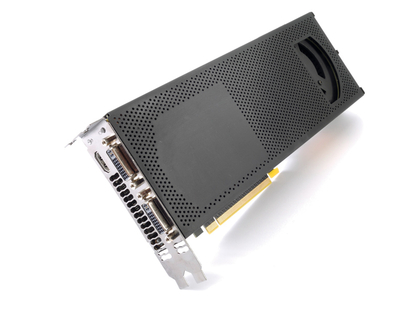
14. Nvidia GTX 285 – £249
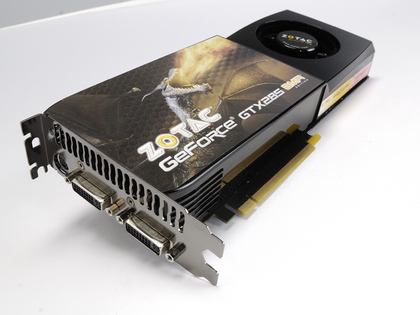
It was the six-month refresh and die-shrink of Nvidia’s thoroughly impressive, and mightily successful GTX 280 card.13. AMD Radeon 4870 X2 – £245
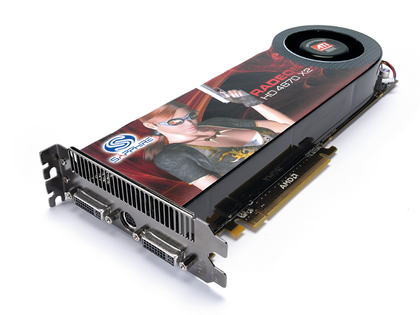
12. Nvidia GTX 275 – £165
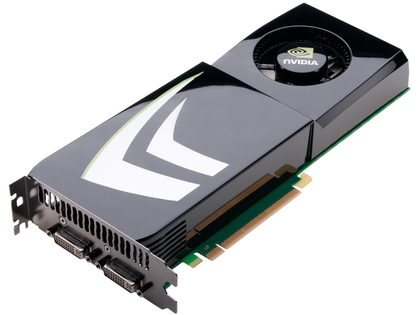
11. AMD Radeon 4890 – £140
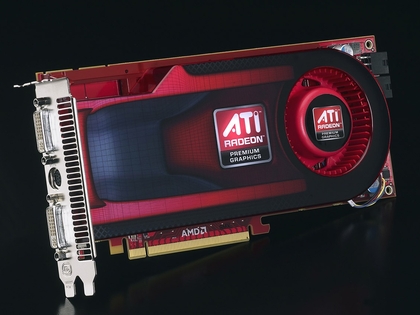
10. Nvidia Geforce GT 430
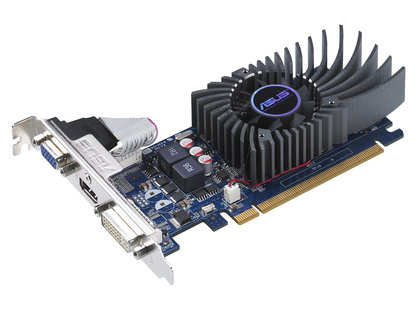
9. AMD Radeon HD 5750
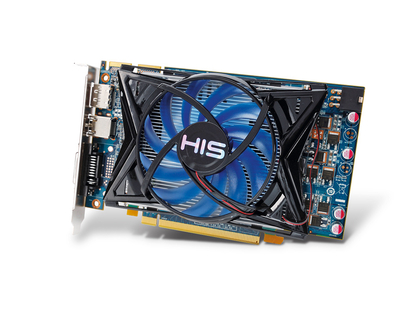
8. AMD Radeon HD 5770
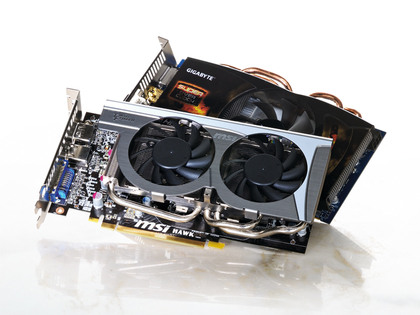
7. Nvidia GeForce GTS 450
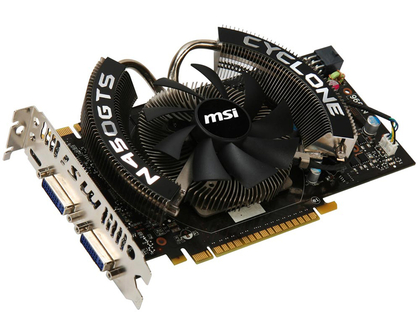
6. AMD Radeon HD 6850
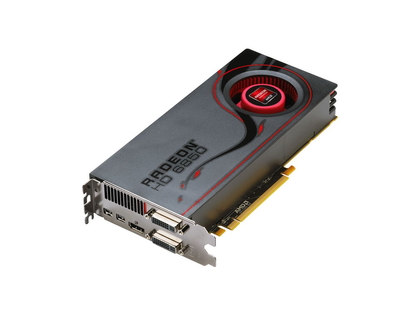
5. Nvidia GeForce GTX 460 1GB
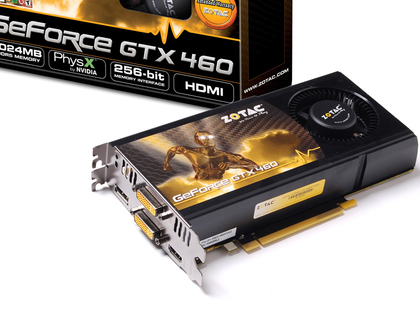
4. Nvidia GeForce GTX 470
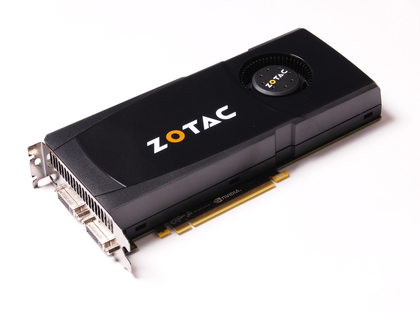
3. AMD Radeon HD 6870
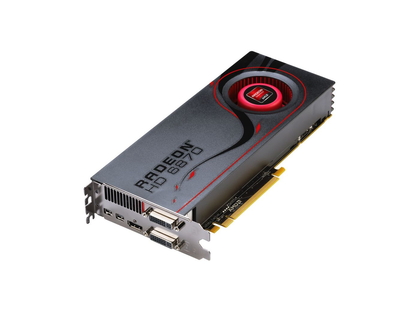
2. Nvidia GeForce GTX 480
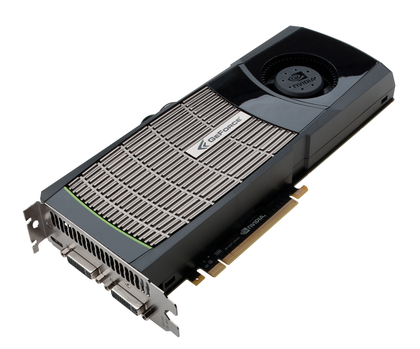
1. ATI Radeon HD 5970
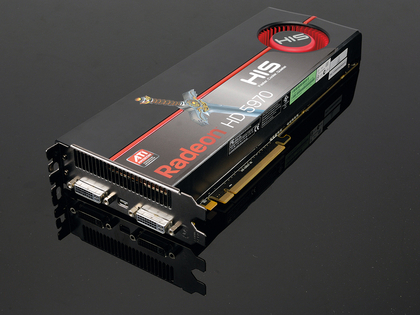
Jumat, 12 November 2010
Best Computer Graphics Cards in the World
Posted by Zay Abidin on Jumat, November 12, 2010
The graphics card is without doubt the star of any PC capable of gaming, but the options out there are vast. So it’s TechRadar to the rescue with our new and improved definitive guide to the top ten fastest and best commercial graphics cards on the planet.
The graphics card is the thoroughbred racehorse of your rig, but picking through the nags that are on offer out there is not for the faint hearted. In this guide though we’ll let you know what’s hot, what’s cool and what the fastest GPUs available are.
Still pumping out the pixels with the best of them, Nvidia’s venerable GTX 295 is sitting pretty. This was Nvidia’s last multi-GPU card, and ruled the roost for a long time; it was only AMD’s latest dual-GPU card, the HD 5970, that managed to best it in performance terms.
The GTX 295 has just about got the edge in performance terms over the HD 5870, thanks to those twin GT200b GPUs humming away in that sinister-looking, monolithic casing.
This, the GTX 285, was Nvidia’s fastest single-GPU card right up to the launch of the GTX 480.
The GT200b GPU beating at its heart packed in the same 1.4bn transistors in a chip that was actually over 100mm sq smaller, which is why it was able to ramp up the clockspeeds of this lightning fast DX10 card to such an extent.
For years both ATI and Nvidia had been trying to create a multi-GPU card that combined two graphics processors in one single card design. And both had failed quite impressively until the HD 4870 X2 hit the market proving that it coule be done and done right.
Like the rest of these older cards, The 4870 X2 isn’t able to cope with the rigours of DX11, and the tessellated goodness it entails, but for general graphical performance it’s got it where it counts.
The GTX 275 offers fantastic DX10 performance, happpily driving most games at 1920 x 1200 with all the bells and whistles turned on.
There’s also the added bonus of the PhysX and CUDA capabilities of the Nvidia family of graphics cards, allowing you to utilise some of the extra gaming features PhysX gives you and the GPU computing features of the CUDA programming language.
Coming a lengthy nine months after the launch of its inaugural HD 48xx card, the HD 4870, the HD 4890 was much more than just an overclocked version of AMD’s fastest single-GPU card of the time.
There’s a host of overclocked versions which pump the frames even harder, and if you can palate the thought of jumping into a Crossfire setup, adding a second HD 4890 isn’t a bad option given the mature drivers.
The bottom-end, mainstream DX11 card in Nvidia’s lineup is the GT 430, and the first thing you’ll notice is that it’s designed to cater for the wee machine crowd.
The chip is based on a half-height PCB and in the box you’ll find two spare brackets – both half-height too – for plugging into media-centre/lounge PCs.
With another new CPU design to cover this lower-end card, we’re seeing a GPU that, as well as having its PCB halved in size, has been almost halved itself relative to the GTS 450′s GF106, which hit us a month or so back.
We say almost, because it’s actually a little bit less than half the chip of the rather impressive GTS 450. The GF108 has two Streaming Multiprocessors as opposed to the GF106′s four, meaning we get half the number of CUDA cores and texture mapping units at 96 and 16.
This isn’t a hardcore gamer’s card. Rather, it’s a GPU designed to be dropped into small form factor PCs to play high-defvideo and do as much video encoding and photo editing as you need in your lounge.
In gaming terms, it can trade blows with AMD’s eight-month-old HD 5570; just enough poke to do some light gaming then, but not a hardcore gamer’s card by any means.
The HD 5750 isn’t what you’d call a gaming powerhouse; it has the cojones to run games at 1680 x1050, but only just. Don’t expect searing framerates, especially when Anti Aliasing and Anisotropic Filtering are turned up.
Moreover, DX11 effects, such as Tessellation and Multi-Thread Rendering, require the kind of resource overheads that the 5850 can’t quite manage. with its narrow memory bus and a GPU that pales in comparison to AMD’s other offerings, it
It also faces very stiff competition in the marketplace. At around the same price you can get the measurably more-capable GTS 450 from Nvidia, and for just a few bob more, AMD’s own HD 5770. This makes it perrty hard to justify as an upgrade to an existing, older card that may be in your system.
On the other had, for the casual gamer with a 19″ monitor, the 5850 is just perfect. And the multi-panel functionailty offered by AMD’s EyeFinity technology means that, for multi-screen productivity setups, there’s still a lot to like.
In summary, the 5750 is much more suited to productivity and casual gaming at lower resolutions than full-on gaming. It can manage the job, but for this price, there are much better options open to you.
For budget-conscious gamers, theHD 5770 should be a serious consideration. Have a scoot around the online retailers, and you’ll see that examples can be had for less than £100 now,
Offering competent performance at the mainstream 22-inch resolution of 1680×1050, it also comes with the promise of cool-running, quiet operation – a trademark of AMD’s current design philosophy. However, try and crank the shinier graphical elements – such as Anti-Aliasing and Anisotropic Filtering – too high, and the card starts to run out of grunt.
AMD’s EyeFinity technology, which enables multi-screen scaling, is a very real option with the 5770, though we wouldn’t recommend the 5770 for multi-screen gaming; it just doesn’t have the throughput for gaming at huge resolutions.
But the really interesting thing about the HD 5770 is what its price represents. at these low prices, our thoughts turn to Crossfire setups. For under £200, you can net yourself a twin-card setup which offers kick-ass performance at mid-range resolutions.
If you’re content with that 22-inch monitor and want zingy performance on a budget, this CF setup is probably thecheapest way to achieve it… and at a price equivalent to Nvidia’s last-gen 285, which such a setup will blow out of the water, it’s pretty mouth-watering. Oh, and did we mention the 5770 is DX11 capable? Yum.
And that’s what that lower price-point really represents: the prospect of a twin-card CrossFire setup, and a pretty feisty one at that.
If 1680 x 1050 is the mass-market gaming resolution of choice, then the GTS 450 is opium for the masses.
This tiny powerhouse (well, it’s still dual-width, but pleasingly short) is capable of feats beyond it £90-£100 pricetag. What’s more, in SLI, you’ll see massive performance gains, making the dual-card upgrade path a realistic and impressive option for budget systems.
The basic GeForce GTS 450 is, architecturally, about half of a GeForce 460 with a higher clockspeed and a narrower memory bandwidth. Given that stock versions of the 768MB version of the GeForce GTX 460 are available for just £125, that extra £20 is well spent.
However, the GTS 450 has the advantage over the GTX 460 of being smaller and requiring less power, which makes it a strong candidate for that SLI set-up
It is, however, now pitched directly up against the HD 5750 in pricing terms thanks to the on-going Nvidia/AMD graphics card price wars. And that is a card the GTS 450 happily beats into submission in any benchmark you throw at it.
Launching at £160, the HD 6850 seemed like a close competitor for the GTX 460, with an ever-so-slightly-larger wallet-slap
However, sudden cuts have meant that if you shop around, you can find HD 5850s for Around the price of a GTX 460 1GB.
What you get for your money (around £150 on average) is generous midrange performance that can just hold its own when the resolution rises to 1920×1200. apples for apples, it’s almost a dead-ringer for the GTX 460; interestingly, it also removes AMD’s own 5850 from the equation and pushes it into the passe.
Like it’s big brother the 6870, the 6850 boasts a new anti-aliasing mode, termed MorphoLogical Anti-Aliasing, or MLAA for short.
The interesting thing here is that it uses DirectCompute to process the full scene after it has been rendered, to produce results similar to 4x MSAA but faster and at a reduced memory footprint. There have been some improvements to the anistropic filtering engine too to smooth the transition between different levels of detail to reduce the effects of stepping.
A high-tech, midrange card at a decent pricepoint… we expect AMD’s hardware partners to shift a good few of these.
The 1GB version of the GTX 460 (there’s also a noticeably less powerful 768MB iteration) started at a price-point which undercut its immediate Radeon-shaped competition by a fair margin, and that’s only got better as the months have gone by.
The GTX 460′s rejigged GF100 GPU though may sound like Nvidia has just chopped the GTX 480′s chip in half, with only seven streaming multiprocessors (SMs) against the older card’s fourteen, but inside, things have most definitely changed.
These SMs are the units that hold the myriad CUDA cores (previously known as shader processors), special function units (SFUs), texture mapping units (TMUs) and the polymorph engines that contain the all-important tessellation grunt.
The SMs of the GF100 chips contain a maximum of 32 shader cores, four SFUs and four TMUs. In the GTX 460 chip though NVIDIA has squeezed another 16 CUDA cores into each SM and upped the SFU and TMU counts to eight per SM.
Each of these SMs has also had some CPU-like extra multi-threading goodness injected into them in the shape of an extra couple of dispatch units in each of them.
What this means is awesome midrange performance, and respectable performance at resolutions higher than 1680×1050. Pair a couple up for SLI kicks though, and you get a punchy setup that kicks Nvidia’s own GTX 280 into touch.
Not so hot on the heels of Nvidia’s first DX11 graphics cards came the GeForce GTX 470, a cut-down version of the GF100 GPU the green company is rightfully proud of.
Given the larger pricetag of its big brother, the GTX 480, this represents the most affordable high-end Fermi card out there.
Like the rest of the Fermi range, the 470 has seen some nifty price-cuts, which means it can now be had for £200 (we’ve seen it as low as £188 online). This makes the cheapest 470s at just £30 more expensive than the GTX 460 1GB, the new midrange king. That makes it a pretty compelling prospect right now.
In addition, at the native 22-inch resolution of 1,680×1,050, this card is a fair way ahead of the HD 5870. When things get cranked up though, it starts to lose its competitive edge against AMD’s upper-midrange peer.
Indeed, in our World in Conflict benchmark it actually dropped behind. Still, thanks to its Fermi roots, the GTX 470 has still got the tessellation goods and this promises some future-proofing.
Thankfully, production has ramped up nicely, and the early stock-issues that plagued the 470 and 480 are now long past. More cards in stockrooms means lower prices everywhere, so keep an eye on the 470 – it may yet drop some more.
AMD’s 6870 is really the march of things to come for AMD. The BARTS GPU will drive AMD’s high-end 6000 series, which hits later this month, and that makes the 6870 something of a stop-gap measure between the this and the 5000 series of cards.
As the advance-guard of AMD’s 6000-series, It also brings some new functionality to the party, in the name of HD3D. This is AMD’s passive 3D technology – largely nascent at present – but the card also supports HDMI 1.4a for 3D Blu-Ray displays.
Architecturally, this mainstream card is a cross between the 5830 and 5850. You get the full-fat 32 ROPs as found on the 5850, but with a core configuration of 1,120 stream processor, as found inside the 5830.
The tweaked core operates at a far higher clock rate to either of these predecessors though, cranking along at 900MHz, as opposed to the 750MHz of the 5850 and the 5830′s 800MHz.
In real terms this means that the 6870 is faster than the 5850, but it’s a little slower than the 5870, so don’t assume because it’s one number higher on the title, there’s a huge generation gap. It’s also faster than its closest competition on the Nvidia front, the GTX 460, and impressively, the GTX 470 as well.
For £200, there’s a lot of value here, the HD 6870 brings AMD’s trademark elegance (reduced heat and noise output) to your PC. We’re eagerly awaiting the rest of the 6000 range to see what AMD has up its sleeve this generation.
You’d think graphics cards would get worse with age, but after numerous price-cuts, the late-to-the-DX11-party GTX 480 is still one of the strngest contenders due to the fact that it’s 24% cheaper than at its launch. Oh, and did we mention it’s also the fastest single GPU in existence? Frames-per-penny, the 5970 may be a better value proposition, but for those without £400 to throw around, the 480′s the next best thing.
The full Graphics Fermi 100 GPU (GF100) is a marvel of graphical architecture, but some of the 512 small processing (CUDA) cores had to be dropped. The GTX 480 then comes with 480 of these cores, but still manages to pack one hell of a punch.
The key for Fermi, and the purported reason for its lengthy delay, was to ensure it had the best possible tessellation performance.
Tessellation is going to be one of the key tasks for future GPUs, the ability to render more detailed geometry rather than simply better, smoother textures, and Nvidia wants to be at the forefront.
The difficulty is that once tessellation becomes that important, and heavily used in modern gaming development, this card may not quite have the grunt. For now though it’s still an incredible piece of engineering.
The minimum aim for the GTX 480 was to beat AMD’s HD 5870 and, it manages that, making it the fastest single-GPU card around. Let’s see if that changes with AMD and Nvidia’s imminent range-refreshes.
So here it is; the fastest commercial graphics card available today; the Radeon HD 5970.
AMD has taken the top spot and managed to hold out against the latest Fermi card from Nvidia, the GeForce GTX 480.
This twin-GPU beauty is one big, beefy, powerhouse of a graphics card, capable of spewing out polygons like last night’s bad kebab. And it since its launch, we’ve seen over £100 fall from the price-tag to keep the stock flowing.
It isn’t just two HD 5870s strapped onto one slab of PCB though – there’s definitely nothing simple about fitting two graphics cards into one form factor.
The actual GPUs are slightly slower than a vanilla HD 5870, making them more akin to twin overclocked HD 5850s. This also means that a Crossfire setup sporting two actual HD 5870s will beat this card in a foot race. But this is Crossfire made easy and that’s something that could rarely be said in the past.
Surprisingly, given the power requirements, it doesn’t get quite as hot as the volcanic GTX 480, a card that actually wiped some of our fingerprints during testing. And surprisingly, it’s remarkably stable and happy to be overclocked.
Some would say that overclocking what is already the fastest graphics card in the world is a bit like overkill, but the option is there for the brave. There are concerns over driver support though, given that DX11 launch title, and AMD Game titleDiRT 2 didn’t support the multi-GPU HD 5970 until very recently, so like Crossfire in general, it could present compatibility questions going forward.
It’s not as dear as it was, but it’s still pricey, and what that means with both Nvidia and AMD refreshes on the horizon is anyone’s guess. Ours would be: further price cuts. Affordability FTW!
And right now, it’s still the fastest graphics card out there, posting figures with a healthy lead over the closest competitor from Nvidia. Considering that just a couple of generations ago ATI looked to be choking on Nvidia’s dust with the HD 3xxx series of cards, it’s quite incredible that it has managed to take the top spot and hold it against cards coming out almost half a year later.
Hats off to you then HD 5970, you are the fastest graphics card in the world.
Courtesy: TechRadar



